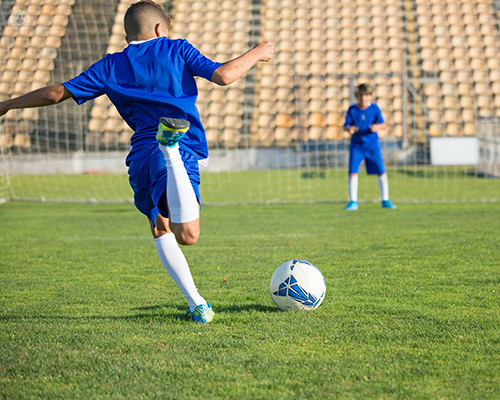Patellar instability: anterior knee pain with or without unstable kneecaps in children
Autore:Knee problems are frequent during a child’s growth, especially in those who play contact sports. Of these pathologies, a dislocated patella is among the most common.
Here to provide a comprehensive overview of patellar instability is Mr Darius Rad, consultant paediatric orthopaedic surgeon with specialist interest in knee sports injuries.

What is patellar instability?
The extensor mechanism, which is comprised by the quadriceps tendon, the patella and its tendon, makes up the apparatus responsible for creating the movement and extension of our knees. The relationship between these parts, other structures around the knee and the overall alignment of the lower limb, give the patella the necessary balance and prevent it from being unstable.
What are the symptoms of patellar instability?
Sometimes, if one or more structures are not optimal, due to developmental issues or traumatic ones, the patella will 'slide out' laterally or feel like it 'wants to move out'.
This scenario is common and most of the times, it will feel like the patella is unstable, but this is not the case. Still, it will require treatment, either physiotherapy or, in some instances, surgery.
In true dislocation situations, the patella will objectively 'pop-out' from its place in the trochlear groove (the space at the anterior end of the femur). This can happen after an acute event such as during football, when the patella is directly hit by accident. This occurs mostly in the lateral aspect and in most cases, will relocate on its own. If it does not, an A&E attendance would be needed.
There are also situations where the kneecap dislocates even without preceding trauma and this is due to abnormal relationships between the structures around the knee, both soft tissue and bony.
What causes patellar instability and is there an age group that's most likely to be affected?
The causes can be multifactorial, especially in the context of developmental or congenital patella-femoral instability as previously described.
Can patellar instability lead to further problems with the knee?
Like all issues creating instability in any joint structure, there is a high risk of articular surface damage (cartilage trauma). If the joint surface is injured, the risk of wear and tear arthritis is increased. With instability, a child might start to refuse doing the things they enjoy, such as sporting activities, dancing and even swimming. This will ultimately hinder their wellbeing and create other physical or mental health related problems.
How is patellar instability diagnosed?
Clinical diagnosis is paramount. This is achieved through history taking and clinical examination. There are certain signs that the clinician will look for, from the history point of view but also from seeing how the patella looks and moves in relation to its groove. Symptoms like reluctancy to have the kneecap touched can also be a sign of instability.
Other methods of diagnosis following a thorough clinical exam are plain radiographs, which look at overall lower limb alignment and patella-femoral joint architecture. Magnetic resonance imaging (MRI) can also be used to confirm instability relating to the medial patellofemoral ligament (MPFL) failure or other soft tissue or cartilage pathology not visible on simple imaging studies.
How is patellar instability treated?
Conservative means of treatment should be the first line in managing this condition.
Physiotherapy and muscle balancing or strengthening programmes should be started early, with the objective of avoiding further progression to frank dislocations and perhaps even avoiding surgery.
If therapy does not resolve the instability and this becomes debilitating, surgical options become available. These range from a simple MPFL reconstruction to guided growth surgery in the skeletally immature patients to correct coronal plane malalignment (knocked knees) and to osteotomy procedures to better align the extensor mechanism structures.
Mr Darius Rad is a consultant paediatric orthopaedic surgeon who specialises in knee surgery and patellofemoral disorders. If you would like to seek expert treatment for your child’s patellar instability, don’t hesitate to visit Mr Rad’s Top Doctors profile today.


